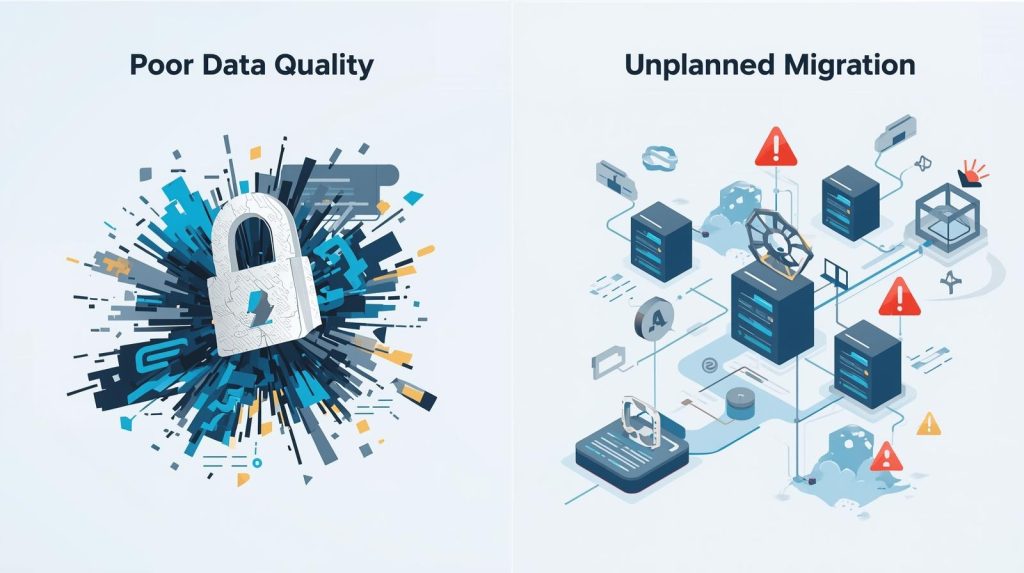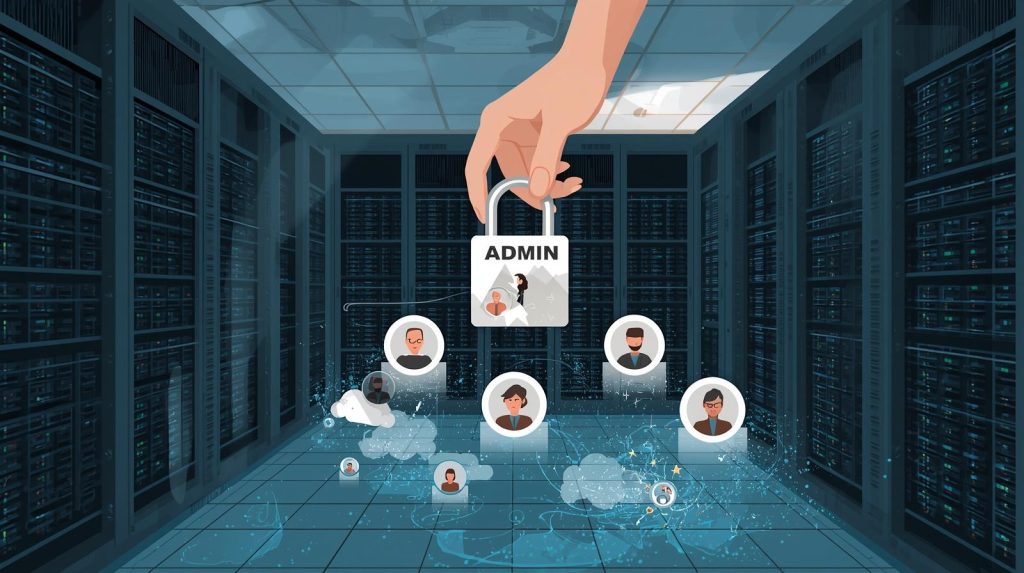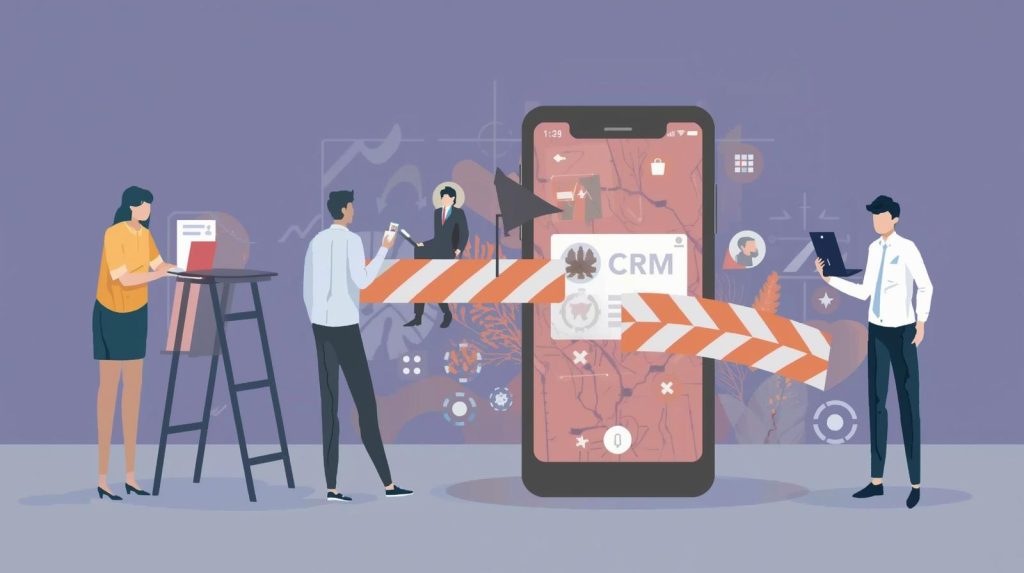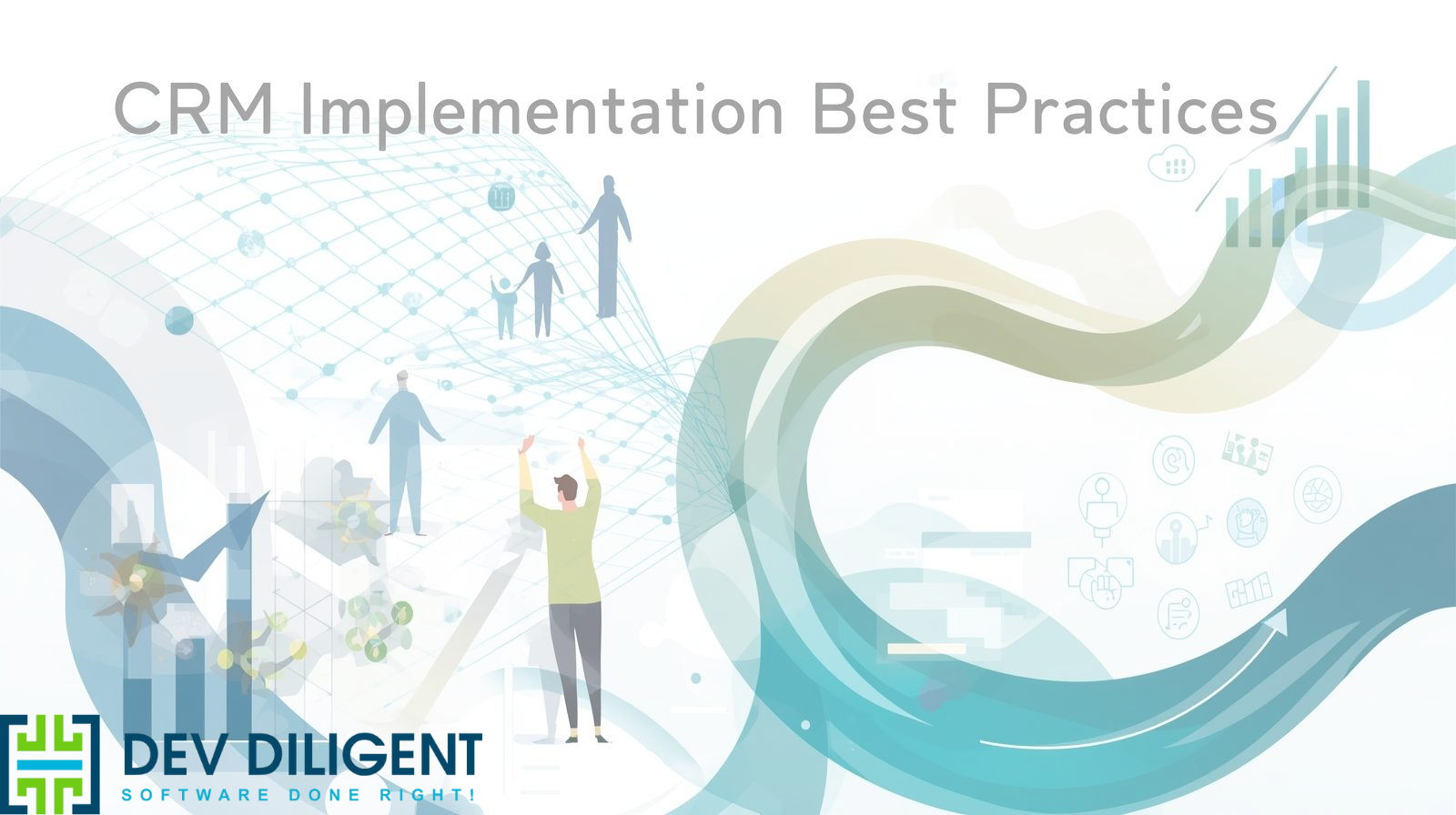Implementing a CRM (Customer Relationship Management) system is one of the most critical milestones in any company’s digital transformation journey. When executed correctly, it enhances productivity, customer satisfaction, and sales performance. However, without proper planning, your CRM project can easily fall short of expectations—leading to wasted time, higher CRM implementation cost, and poor adoption.
Whether you’re working with a CRM implementation consultant or managing the project in-house, understanding common pitfalls helps ensure smoother execution and long-term success. Let’s explore the top CRM implementation mistakes developers, project managers, and business owners should avoid—and how to prevent them with structured planning, smart tools, and clear communication.
Common CRM Implementation Mistakes & How to Avoid Them
| Mistake | How to Avoid |
|---|---|
| Lack of Clear Objectives | Set SMART goals, align CRM workflows to business priorities, build measurable dashboards |
| Inadequate Planning and Strategy | Develop a detailed roadmap with milestones and contingencies, review and update strategy regularly |
| Not Involving End-Users Early | Engage staff from all departments, collect workflow feedback, run pilots and adjust |
| Poor Data Migration and Integrity | Cleanse and deduplicate data, test migration in stages, set ongoing data validation and maintenance protocols |
| Over-Customizing Too Soon | Start with basic features, document all changes, reassess complexity after users are comfortable |
| Insufficient User Training and Support | Offer live and ongoing training, create peer support networks, appoint CRM “champions” |
| Failing to Integrate with Other Tools | Prioritize built-in or API integrations, work with IT to unify data flows and ensure platform compatibility |
| Neglecting User Feedback | Schedule regular surveys and review sessions, refine CRM configuration in response to feedback |
| Underestimating Data Security | Enforce user permissions, use encryption, vet integrations, maintain updates, and compliance protocols |
| Failing to Track Adoption and ROI | Monitor usage metrics and business KPIs, review adoption with stakeholders, adjust strategies as needed |
1. Undefined Objectives and Lack of Business Alignment

The CRM implementation Mistake
Many companies start a CRM implementation just to “get organized,” but never clearly define what success looks like. Without measurable goals, your CRM becomes just another tool instead of a business enabler.
Technical Impact
-
- Developers can’t design relevant data fields or custom modules.
-
- Workflows, reports, and dashboards don’t align with KPIs.
-
- Integration with marketing or ERP systems may fail to support real use cases.
How to Avoid It
Start with clear business goals—such as increasing lead conversion by 20% or reducing manual data entry by 40%. Then document these as part of your CRM implementation steps. This gives both developers and managers a measurable target to work toward.
2. Poor Data Quality and Unplanned Migration

The Mistake:
Transferring messy or duplicate data from your old system to your new CRM is a recipe for disaster.
CRM Mistake Technical Impact:
-
- Duplicate contacts and leads distort analytics.
-
- Workflows may fail due to missing fields or incorrect mapping.
-
- Dirty data inflates your CRM implementation cost over time due to manual fixes.
How to Avoid this Mistake
-
- Use ETL tools to Extract, Transform, and Load data systematically.
-
- Validate and clean data before migration using SQL scripts or Python automation.
-
- Run test imports to check field mapping and relationships.
Example:
SELECT email1, COUNT(*)
FROM contacts
GROUP BY email1
HAVING COUNT(*) > 1;This identifies duplicate emails that could disrupt automation workflows.
3. Ignoring User Roles and Permissions

Mistake:
Assigning “admin” rights to everyone for convenience might seem quick—but it compromises data security and system integrity.
Impact:
-
- Unauthorized access to sensitive customer data.
-
- Users may unintentionally delete or overwrite key information.
-
- Difficult to maintain compliance with data protection policies.
How to Not Do It:
During early CRM implementation steps, define user roles—such as Sales Executive, Project Manager, or Support Agent—and grant only the necessary permissions.
Modern CRMs like SuiteCRM or Perfex CRM include role-based access modules that can be customized per department.
4. Over-Customization Without Structure:

The Mistake
It’s tempting to customize every feature—but too much customization makes maintenance complex and future updates risky.
Technical Impact
-
- Slower performance due to unnecessary modules.
-
- Compatibility issues during version upgrades.
-
- Harder debugging and increased support cost.
How to Avoid It
-
- Follow a modular approach—customize only where essential.
-
- Use extension frameworks and logic hooks rather than editing core files.
-
- Keep a version-controlled repository (Git) for all changes.
A CRM implementation consultant can help balance customization and scalability.
5. Neglecting User Training and Adoption

The Mistake:
A technically perfect CRM can still fail if your team doesn’t know how to use it.
Technical Impact:
-
- Incomplete data entry or inconsistent records.
-
- Reduced productivity due to user frustration.
-
- Limited ROI on your CRM investment.
How to Avoid It:
-
- Provide training sessions and video tutorials.
-
- Create a test or “sandbox” environment for hands-on learning.
-
- Track user engagement metrics post-launch.
Including structured onboarding in your CRM implementation timeline ensures your users gain confidence before the official rollout.
6. Skipping Integration Planning:

The Mistake:
Your CRM doesn’t exist in isolation—it must connect with marketing tools, ERP, payment gateways, or customer portals. Failing to plan integrations can cause major technical roadblocks.
Technical Impact:
-
- Data silos and unsynchronized systems.
-
- Duplicate leads or inconsistent customer data.
-
- Workflow errors due to broken API calls.
How to Avoid It:
-
- Identify all required integrations early (e.g., Gmail, Mailchimp, or Stripe).
-
- Use REST APIs and authentication tokens for secure communication.
-
- Implement webhooks for real-time updates.
Example:
fetch("https://crm.dev/api/v1/leads", {
method: "POST",
headers: {
"Authorization": "Bearer YOUR_API_TOKEN",
"Content-Type": "application/json"
},
body: JSON.stringify({ name: "John Doe", email: "john@example.com" })
});
Testing all integrations before going live saves hours of troubleshooting later.
7. Not Testing Workflows and Automation

The CRM implementation Mistake:
Many teams set up workflows (like lead scoring or auto-assigning tasks) but skip detailed testing.
Technical Impact:
-
- Automation may trigger incorrectly or not at all.
-
- Emails or notifications may loop endlessly.
-
- Cron jobs might overload the server.
How to Avoid It:
-
- Test every workflow using staging environments.
-
- Enable detailed logs for automation rules.
-
- Schedule periodic checks as part of your maintenance cycle.
8. Overlooking Mobile Optimization

The Mistake:
Ignoring mobile access limits CRM adoption, especially for sales or field teams.
Technical Impact:
-
- Slow loading or broken layouts on mobile devices.
-
- Missed updates from teams working on-site.
-
- Incomplete lead updates from mobile users.
How to Avoid It:
-
- Build responsive designs using frameworks like Bootstrap or Tailwind CSS.
-
- Test across multiple devices and browsers.
-
- Consider Progressive Web Apps (PWAs) for offline access.
9. Failing to Monitor System Performance

CRM implementation Mistake:
Post-launch, many teams forget ongoing performance tracking.
CRM Technical Impact
-
- Slow database queries affecting user experience.
-
- Unoptimized workflows clogging the system.
-
- Server resource exhaustion during peak usage.
How to Avoid It:
-
- Regularly run performance audits with tools like New Relic or GTmetrix.
-
- Use caching mechanisms and optimize database indexing.
-
- Automate monitoring scripts for CPU and memory usage.
Example:
EXPLAIN SELECT * FROM leads WHERE email1='client@example.com';This helps locate inefficient queries slowing down your CRM.
10. No Maintenance or Upgrade Plan

The Mistake:
Once the system goes live, teams often assume the job is done. But every CRM needs continuous improvement.
Technical Impact:
-
- Outdated plugins or APIs may break features.
-
- Security vulnerabilities increase over time.
-
- Missing performance patches lead to system instability.
How to Avoid It:
-
- Define a maintenance schedule in your CRM implementation timeline.
-
- Automate backups using cron jobs.
-
- Test updates in staging before applying them to production.
Example:
mysqldump -u root -p crm_database > backup_$(date +%F).sqlThis ensures your data remains secure before any system changes.
Understanding CRM Implementation Cost
The CRM implementation cost varies depending on:
-
- Platform type (open-source vs. SaaS).
-
- Level of customization and integration.
-
- Number of users and data volume.
-
- Involvement of a CRM implementation consultant or agency.
Average mid-level projects cost between $5,000 to $50,000, depending on scope and features. Working with an experienced CRM implementation services provider helps you control cost through efficient planning, automation, and resource allocation.
Recommended CRM Implementation Steps
Here’s a summarized version of the ideal CRM implementation steps:
| Step | Description |
| 1. Define Goals | Establish clear business objectives. |
| 2. Select Platform | Choose between SuiteCRM, Perfex CRM, Odoo, or a custom solution. |
| 3. Plan Data Migration | Clean, validate, and import data accurately. |
| 4. Configure User Roles | Set up security and permissions. |
| 5. Customize Modules | Adapt CRM to match your workflow. |
| 6. Integrate Tools | Connect with marketing, email, or ERP platforms. |
| 7. Train Users | Prepare teams through demos and documentation. |
| 8. Test & Launch | Validate functionality and fix issues. |
| 9. Monitor Performance | Track adoption and speed. |
| 10. Maintain & Update | Schedule upgrades and security checks. |
Conclusion:
A CRM is only as effective as its implementation. Avoiding these common mistakes—like unclear goals, poor data migration, and ignoring integrations—can make a significant difference in long-term success. Whether you’re managing an internal rollout or hiring a CRM implementation consultant, plan each stage carefully and follow a structured CRM implementation timeline.
At DevDiligent, we specialize in custom CRM implementation services—helping businesses design, deploy, and scale their CRM systems efficiently. Our experts ensure your CRM is technically sound, cost-effective, and perfectly aligned with your business processes.
Frequently Asked Questions ( FAQs )
1. What are the biggest reasons CRM implementations fail?
Poor planning, unclear objectives, weak user adoption, low data quality, and inadequate integration are the top failure reasons.
2. How important is executive buy-in for CRM success?
Very important—without leadership support and championing, CRM projects often stall and fail to get full team engagement
3. Why does poor data quality sabotage CRM projects?
Dirty, incomplete, or duplicated data leads to unreliable reporting, bad decisions, and user frustration.
4. Should we customize our CRM heavily from the start?
Excessive early customization can complicate workflows; start simple, adapt after user feedback and basic adoption.
5. How can we increase user adoption rates?
Invest in training, intuitive configuration, gamification, and appoint CRM “champions” on each team.
6. What happens if we don’t integrate our CRM with other business tools?
You’ll face siloed data, broken workflows, and duplicated effort unless your CRM connects with sales, marketing, support, and other platforms.
7. Is ongoing CRM maintenance necessary?
Yes—regular updates, audits, and improvements keep your CRM effective, secure, and aligned with business growth.
8. Does every team need to be involved in CRM selection?
Absolutely—cross-functional input ensures the CRM fits actual business needs and boosts adoption.
9. How important is tracking CRM adoption and ROI?
Critical—tracking usage and business KPIs shows what’s working and where improvement is needed.
10. What’s scope creep and why is it risky in CRM projects?
Adding “just one more” feature without business value leads to complexity, delays, and inflated budgets.
11. Can choosing the wrong CRM software doom the project?
Yes—picking a system that doesn’t match your goals, team workflows, or integration needs often leads to failure.
12. How do we make sure our CRM supports business strategy?
Align CRM features, automations, and reports with clear business goals—review strategy regularly as needs evolve.
13. What are key strategies to ensure successful CRM adoption after implementation?
To ensure successful CRM adoption after implementation:
- Set clear goals.
- Train users fully.
- Involve end-users from the start.
- Make CRM easy to use.
- Get leadership buy-in and choose team champions.
- Reward active users.
- Track usage and listen to feedback.
- Manage change proactively.
- Keep improving processes.
14. What are the most common mistakes during CRM implementation?
Poor planning, unclear goals, bad data migration, and lack of user training are the most common CRM implementation mistakes.
15. Why do most CRM implementations fail?
They fail due to poor planning, low user adoption, bad data quality, and lack of consultant support.
16. How can I ensure a successful CRM implementation?
Set clear goals, involve users, train your team, and hire an experienced CRM implementation consultant.
17. What are the key steps in a proper CRM implementation process?
Key steps: planning, CRM selection, data migration, customization, training, testing, and go-live.
18. How long does CRM implementation usually take?
The CRM implementation timeline typically ranges from 3 to 9 months, depending on project size.
19. How much does CRM implementation cost?
CRM implementation cost ranges from $5,000 to $100,000 based on size, customization, and services.
20. What role does a CRM implementation consultant play?
A consultant ensures proper setup, customization, and smooth rollout to avoid common CRM mistakes.
21. How can poor data migration affect CRM implementation success?
It leads to data loss, errors, and low user trust, impacting CRM efficiency and adoption.
22. What are the risks of not training employees during CRM implementation?
Untrained users cause low adoption, incorrect data entry, and wasted CRM investment.
23. How can CRM implementation services help avoid common mistakes?
They provide expert planning, setup, and training to ensure smooth and error-free CRM deployment.
24. What should be included in a CRM implementation timeline?
It should cover planning, setup, migration, testing, training, and post-launch support.
25. Can small businesses avoid CRM implementation issues with low budgets?
Yes, by choosing scalable CRMs, focusing on essentials, and using expert guidance.
26. What happens if CRM implementation is not aligned with business goals?
It causes inefficiency, low ROI, and poor user adoption across teams.
27. How to fix a failed CRM implementation?
Identify issues, retrain users, clean data, and reconfigure the system with expert help.
28. What tools or methods ensure CRM implementation success?
Use project tools like Asana, data validation, and agile methods for smoother execution.


![Why Are People Leaving SuiteCRM? [2025 Insights & Alternatives] Why Are People Leaving SuiteCRM? [Insights & Alternatives]](https://devdiligent.com/blog/wp-content/uploads/2025/10/Untitled-design-10.png)